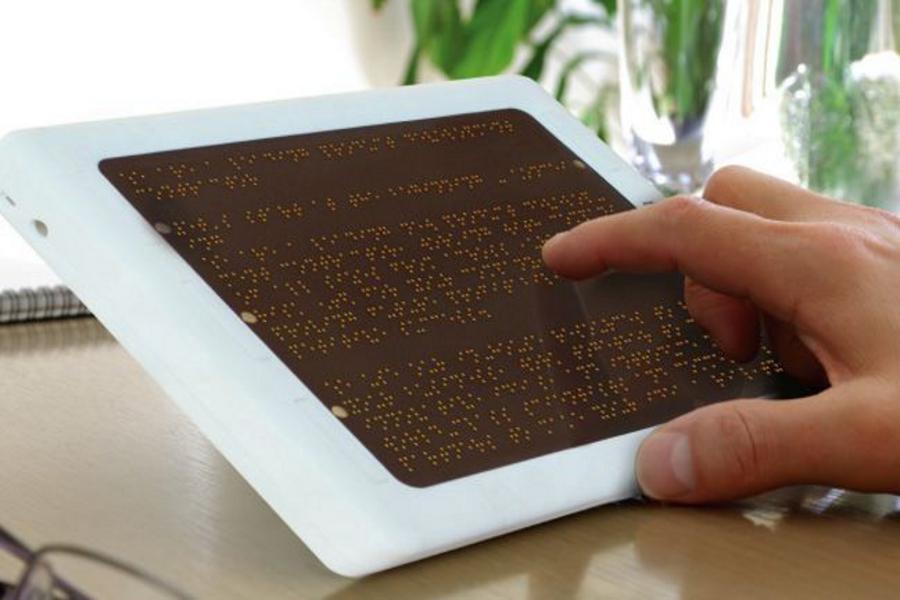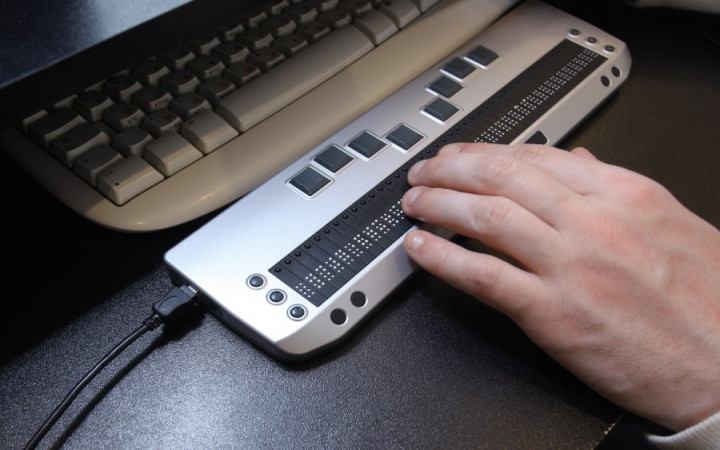Braille Displays and Notetakers: Key Tools for Learning and Work
Braille Displays and Notetakers: Key Tools for Learning and Work
Blog Article
Empowering Self-reliance With Assistive Modern Technology for the Blind
The integration of assistive technology into the lives of individuals with visual disabilities stands for a considerable development in advertising freedom and self-sufficiency. From cutting-edge screen visitors to innovative clever walking canes, these tools not just boost daily navigation and interaction but also empower individuals to involve meaningfully in various elements of life. As we check out the myriad benefits and real-world applications of these modern technologies, it becomes critical to examine the underlying aspects that add to their effectiveness and the possibility for future developments in this important field.
Overview of Assistive Modern Technology

The growth of assistive innovation is grounded in concepts of inclusivity and empowerment. Advancements in software, equipment, and sensory improvements offer individuals with alternatives tailored to their details needs. From screen readers that convert message to speech, to tactile gadgets that share details through touch, these devices change the means people engage with their surroundings.
In addition to useful applications, assistive modern technology fosters higher social inclusion and involvement in numerous sectors, including education and learning and work (Wearable technology for low vision). As r & d remain to evolve, the capacity for assistive technology to further improve the lives of visually damaged individuals continues to be appealing, leading the way for an extra fair culture where everyone can prosper
Sorts Of Assistive Devices
A range of assistive gadgets have actually arised to sustain individuals with visual impairments, each developed to satisfy particular needs and boost everyday performance. These gadgets vary from low-tech services to high-tech advancements, giving varied alternatives for users.
Low-tech gadgets include magnifiers and large-print materials that assist in reading and writing. Braille devices, such as Braille slates and styluses, allow tactile analysis and communication. Positioning and wheelchair help, like white walking canes, help individuals browse their setting securely.
On the greater end of the spectrum, electronic zoom systems and display visitors provide substantial support. Electronic magnifiers permit users to enlarge message and photos on displays, while screen viewers transform electronic web content right into manufactured speech, assisting in accessibility to information on computers and smartphones.
Mobile phone applications additionally play an essential role, providing attributes like message recognition and navigating assistance. Wearable technology, such as smart glasses equipped with enhanced truth, is arising as an encouraging tool to enhance situational recognition.
Advantages of Assistive Innovation
The integration of assistive innovation significantly enhances the quality of life for individuals with aesthetic problems. These modern technologies encourage customers by promoting freedom, allowing them to navigate their environments much more successfully and execute daily jobs with higher ease. For example, display viewers and zoom software program allow people to accessibility digital info, promoting expert and educational possibilities that may have formerly run out reach.
In addition, assistive devices such as clever canes and GPS applications provide real-time navigation help, enhancing mobility and safety. This enhanced autonomy not only improves self-esteem but additionally urges social interaction, enabling individuals to take part more completely in their communities.
Assistive innovation additionally promotes interaction, aiding users link with others with voice acknowledgment and text-to-speech applications. This capability is important for keeping partnerships and accessing vital details.
Additionally, the personalization alternatives readily available with many assistive innovations make certain that users can tailor devices to their certain demands, further improving functionality and performance. Generally, the advantages of assistive technology for individuals with visual impairments are profound, promoting a more inclusive culture where every person can pursue their goals and objectives.
Study and Success Stories
Highlighting the transformative impact of assistive modern technology, countless situation research studies illustrate just how individuals with visual disabilities have effectively incorporated these tools into their lives. One engaging example entails an university pupil who made use of screen analysis software application to navigate academic materials and on-line resources successfully. This technology straight from the source not just facilitated her education yet additionally enhanced her self-confidence in participating in conversations and group tasks.
Another study features a professional that uses a smartphone application created for navigating and item acknowledgment. By utilizing this app, he has actually regained freedom in both his individual and job environments, allowing him to commute separately and engage with colleagues extra efficiently.
In addition, a senior citizen shared her experience with braille e-readers, which allowed her to access a substantial variety of literature and remain gotten in browse this site touch with her community through publication clubs.
These success tales highlight the crucial duty of assistive innovation in cultivating independence, enhancing top quality of life, and advertising social combination for people with visual impairments (Speech-to-text devices for low vision). By welcoming these ingenious devices, individuals can overcome difficulties and take chances that add to their professional and personal fulfillment

Future Fads in Assistive Innovation
Technology in assistive technology is positioned to redefine the landscape of assistance for people with aesthetic problems. Arising trends stress the integration of fabricated knowledge (AI) and maker learning, which enhance the performance of tools that assist with navigating and information access. As an example, AI-driven applications are currently efficient in interpreting aesthetic information in real-time, allowing users to involve with their setting a lot more separately.
In addition, the growth of wearable innovation is advancing rapidly. Smart glasses outfitted with enhanced reality (AR) can offer audio descriptions of environments, transforming just how customers connect with public areas. These tools not only advertise freedom but likewise foster social inclusion.
Furthermore, the Net of Points (IoT) is making homes smarter, enabling smooth connection in between assistive gadgets and everyday home appliances. This connectivity empowers customers by enabling voice-activated controls and computerized feedbacks customized to private needs.
Verdict
Finally, assistive modern technology plays a crucial function in encouraging people with aesthetic disabilities by improving their independence and involvement with their surroundings. The diverse series of applications and gadgets available not only promotes navigation and interaction however also promotes social integration and possibilities for personal and expert growth. As developments continue in this field, the potential for boosting the lifestyle for those you could try this out with aesthetic impairments will certainly expand, cultivating higher freedom and empowerment.

Report this page